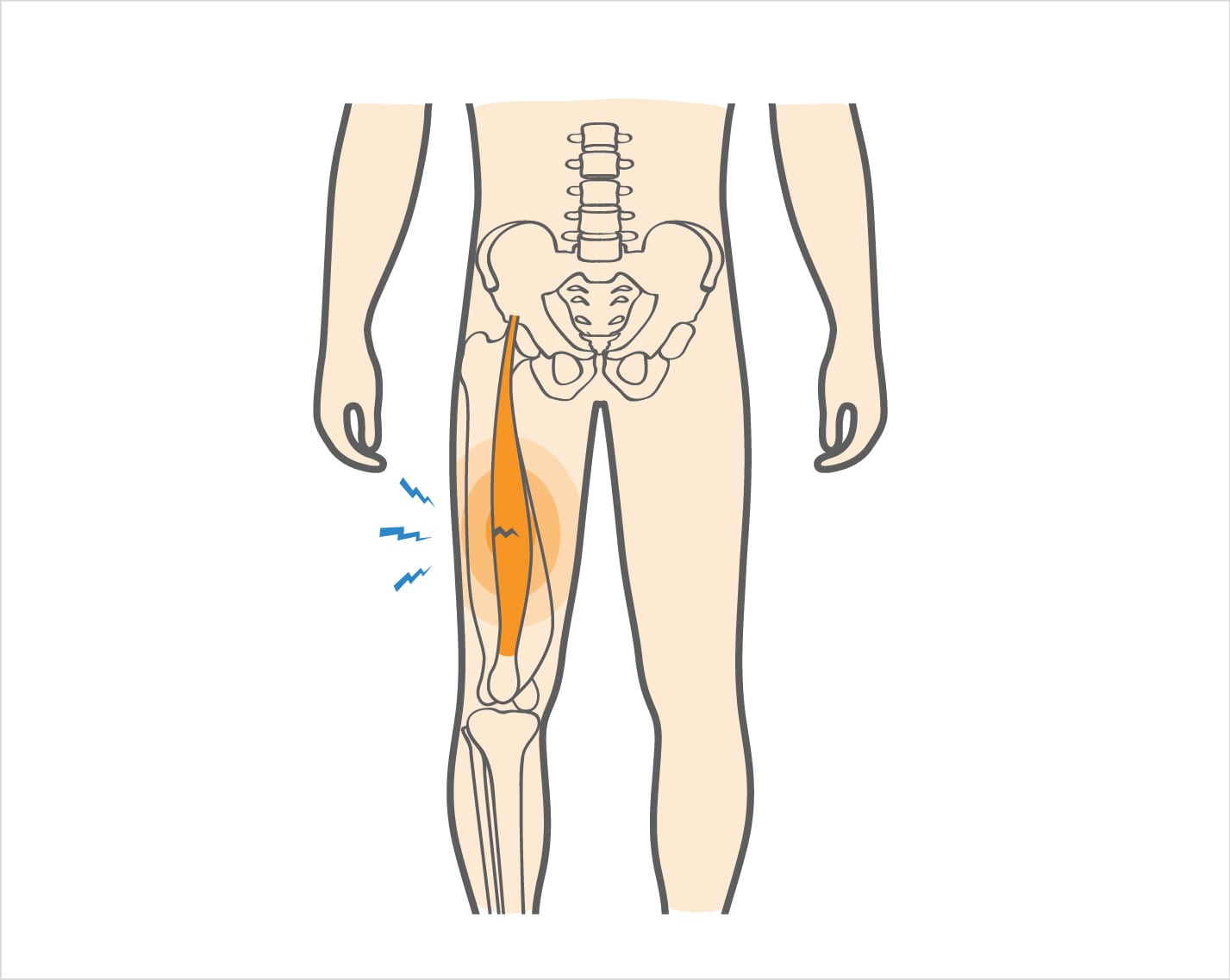The quadriceps are one of three sets of large muscles that make up the thigh. The quadriceps are strong muscles located in the front of the thigh and can handle large amounts of stress. However, they can become overstretched or torn. This kind of injury is a strain and is particularly common among athletes who rely on these muscles for running, jumping, and making sudden starts and stops. Quadriceps injuries range in severity but are often painful and can keep an athlete out of play for several weeks.
Quadriceps Strain Causes, Symptoms & Treatment Options
The quadriceps are one of three sets of large muscles that make up the thigh. They are strong muscles in the front of the thigh and can handle large amounts of stress. However, they can become overstretched or torn. This kind of injury is a strain and is particularly common among athletes who rely on these muscles for running, jumping, and sudden starts and stops. A thigh muscle pull like this can result in significant discomfort and require weeks of recovery.
Overview
Overview

What causes Quadriceps Strain?
Quadricep strains often occur during athletic competition, when athletes make a sudden and forceful motion that pulls or tears the muscle fibers of the quadriceps. This muscle tear usually results from overexertion. Lack of adequate warm-up and stretching can put athletes at greater risk for this injury.
Quadriceps strains are most common in these sports:
• Soccer
• Hockey
• Football
• Rugby
• Basketball
• Sprinting
Symptoms
Quadricep strains often cause pain and loss of strength. These and other symptoms can range from mild to severe, depending on the extent of the muscle tear. Moderate to severe strains will likely keep the athlete on the sidelines from sports play. Common symptoms also include:
- Popping or snapping sensation at the time of injury
- Sharp pain and tenderness
- Swelling
- Bruising
- Loss of strength and motion
- Front thigh pain, especially when walking or bearing weight
When to see a doctor
If you have strained your thigh muscles, you should stop playing immediately. Consult your doctor on a treatment and rehabilitation plan so your injured muscles can heal properly, and you can return to your normal activities. Your doctor will ask questions about your injury and overall medical history. A physical examination will check for signs of injury, like swelling and bruising. Your doctor may check your range of movement by bending or straightening your knee and hip. He or she may order an imaging test (like an X-ray) to check for fractures; occasionally, an MRI may be used to confirm the diagnosis of a thigh muscle pull.
Non-operative treatment
Treatment of quadriceps strains usually involves conservative measures to allow injured muscles to heal properly. Conservative treatments include:
• Rest from activities and sports that place strain on the quadriceps. This could include using crutches to keep weight off the affected leg
• Ice to reduce swelling
• Nonsteroidal anti-inflammatory drugs (NSAIDs), such as ibuprofen and naproxen, to help relieve pain and inflammation
• Compression bandages to help reduce swelling and protect the muscle
• Physical therapy (such as stretching exercises and sports massage) after pain and swelling have subsided, to help in the healing process
Try these exercises to help address your condition:
Below is a PDF of the Exercise Program
Surgical Treatment
Surgery is usually not recommended for the treatment of quadriceps strains. Your doctor can advise you if you should consult with an orthopedic surgeon.
Recovery
The time it takes to return to play will depend on the extent of the injury and how the athlete follows treatment recommendations. Before getting back to sports, athletes should be free from pain and have strength and range of motion similar to pre-injury levels. With proper rest, treatment and rehabilitation, most athletes can expect a full recovery from this injury.
GET BACK TO WHAT YOU LOVE. FASTER
Frequently Asked Questions
What is the most common injury to the quadriceps?
The most frequent quad injuries are muscle strains, tears, and contusions (bruising) due to direct impact or overexertion during physical activity.
How long do quad strains last?
- Mild strains: Heal in about 3 weeks
- Severe strains: May take up to 2 months
Return to sports or exercise should only happen once there’s a full range of motion, and equal strength compared to the other leg, and no pain.
What does a severe quad strain feel like?
A severe quad strain causes sharp pain, swelling, and bruising in the thigh. Movement may be limited, and walking or using the leg may be difficult or impossible.
How can you prevent quad strains?
Prevention strategies include:
- Warming up properly before exercise
- Maintaining flexibility through stretching
- Correcting muscle imbalances
- Avoiding intense activity when fatigued, as tired muscles are more prone to injury

